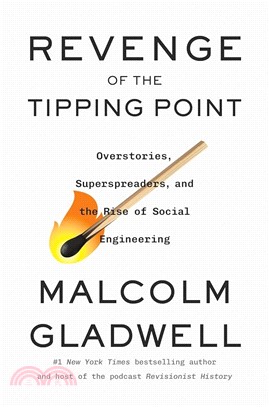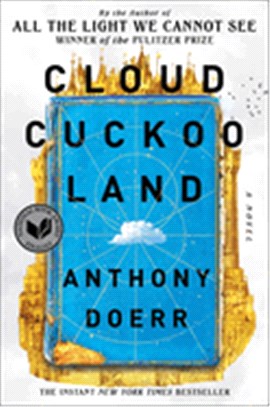A History of the Ancient Near East ─ Ca. 3000-323 Bc
商品資訊
系列名:Blackwell History of the Ancient World
ISBN13:9781405149112
出版社:JOHN WILEY & SONS;LTD
作者:VAN DE MIEROOP
出版日:2006/12/01
裝訂/頁數:平裝/368頁
規格:24.1cm*17.1cm*1.9cm (高/寬/厚)
版次:2
商品簡介
作者簡介
目次
相關商品
商品簡介
This book presents a clear, concise history of the extraordinary multicultural civilizations of the ancient Near East.
Bestselling narrative of the complex history of the ancient Near East
Addresses political, social, and cultural developments
Contains in-depth discussion of key texts and sources, including the Bible and the Epic of Gilgamesh
Includes numerous maps, illustrations, and a selection of Near Eastern texts in translation
Integrates new research, and greatly expands the guides to further reading for this second edition
CourseSmart
Instant access to textbooks as eTextbooks. Learn more at coursesmart.com
Bestselling narrative of the complex history of the ancient Near East
Addresses political, social, and cultural developments
Contains in-depth discussion of key texts and sources, including the Bible and the Epic of Gilgamesh
Includes numerous maps, illustrations, and a selection of Near Eastern texts in translation
Integrates new research, and greatly expands the guides to further reading for this second edition
CourseSmart
Instant access to textbooks as eTextbooks. Learn more at coursesmart.com
作者簡介
Marc Van De Mieroop has taught ancient Near Eastern studies at Columbia University, New York and now also teaches at the University of Oxford. He has written numerous books and articles including King Hammurabi of Babylon: A Biography (Blackwell, 2004).
目次
List of Illustrations.
List of Charts.
List of Maps.
List of Boxes.
List of Documents.
Preface to Second Edition.
Preface to First Edition.
Acknowledgments.
Author’s Note.
1. Introductory Concerns.
1.1 What is the Ancient Near East?.
1.2 The Sources.
1.3 Geography.
1.4 Prehistoric Developments.
Part I: City-States:.
2. Origins: The Uruk Phenomenon.
2.1 The Origins of Cities.
2.2 The Development of Writing and Administration.
2.3 The “Uruk Expansion”.
2.4 Uruk’s Aftermath.
3. Competing City-States: The Early Dynastic Period.
3.1 The Written Sources and their Historical Uses.
3.2 Political Developments in Southern Mesopotamia.
3.3 The Wider Near East.
3.4 Early Dynastic Society.
3.5 Scribal Culture.
4. Political Centralization in the Late Third Millennium.
4.1 The Kings of Akkad.
4.2 The Third Dynasty of Ur.
5. The Near East in the Early Second Millennium.
5.1 Nomads and Sedentary People.
5.2 Babylonia.
5.3 Assyria and the East.
5.4 Mari and the West.
6. The Growth of Territorial States in the Early Second Millennium.
6.1 Shamshi-Adad and the Kingdom of Upper Mesopotamia.
6.2 Hammurabi’s Babylon.
6.3 The Old Hittite Kingdom.
6.4 The “Dark Age”.
Part II: Territorial States:.
7. The Club of the Great Powers.
7.1 The Political System.
7.2 Political Interactions: Diplomacy and Trade.
7.3 Regional Competition: Warfare.
7.4 Shared Ideologies and Social Organizations.
8. The Western States of the Late Second Millennium.
8.1 Mittani.
8.2 The Hittite New Kingdom.
8.3 Syria-Palestine.
9. Kassites, Assyrians, and Elamites.
9.1 Babylonia.
9.2 Assyria.
9.3 The Middle Elamite Kingdom.
10. The Collapse of the Regional System and its Aftermath.
10.1 The Events.
10.2 Interpretation.
10.3 The Aftermath.
Part III: Empires:.
11. The Near East at the Start of the First Millennium.
11.1 The Eastern States.
11.2 The West.
12. The Rise of Assyria.
12.1 Patterns of Assyrian Imperialism.
12.2 The Historical Record.
12.3 Ninth-Century Expansion.
12.4 Internal Assyrian Decline.
13. Assyria’s World Domination.
13.1 The Creation of an Imperial Structure.
13.2 The Defeat of the Great Rivals.
13.3 The Administration and Ideology of the Empire.
13.4 Assyrian Culture.
13.5 Assyria’s Fall.
14. The Medes and Babylonians.
14.1 The Medes and the Anatolian States.
14.2 The Neo-Babylonian Dynasty.
15. The Persian Empire.
15.1 The Rise of Persia and its Expansion.
15.2 Political Developments.
15.3 Organization of the Empire.
15.4 Alexander of Macedon.
King Lists.
Guide to Further Reading.
Index
List of Charts.
List of Maps.
List of Boxes.
List of Documents.
Preface to Second Edition.
Preface to First Edition.
Acknowledgments.
Author’s Note.
1. Introductory Concerns.
1.1 What is the Ancient Near East?.
1.2 The Sources.
1.3 Geography.
1.4 Prehistoric Developments.
Part I: City-States:.
2. Origins: The Uruk Phenomenon.
2.1 The Origins of Cities.
2.2 The Development of Writing and Administration.
2.3 The “Uruk Expansion”.
2.4 Uruk’s Aftermath.
3. Competing City-States: The Early Dynastic Period.
3.1 The Written Sources and their Historical Uses.
3.2 Political Developments in Southern Mesopotamia.
3.3 The Wider Near East.
3.4 Early Dynastic Society.
3.5 Scribal Culture.
4. Political Centralization in the Late Third Millennium.
4.1 The Kings of Akkad.
4.2 The Third Dynasty of Ur.
5. The Near East in the Early Second Millennium.
5.1 Nomads and Sedentary People.
5.2 Babylonia.
5.3 Assyria and the East.
5.4 Mari and the West.
6. The Growth of Territorial States in the Early Second Millennium.
6.1 Shamshi-Adad and the Kingdom of Upper Mesopotamia.
6.2 Hammurabi’s Babylon.
6.3 The Old Hittite Kingdom.
6.4 The “Dark Age”.
Part II: Territorial States:.
7. The Club of the Great Powers.
7.1 The Political System.
7.2 Political Interactions: Diplomacy and Trade.
7.3 Regional Competition: Warfare.
7.4 Shared Ideologies and Social Organizations.
8. The Western States of the Late Second Millennium.
8.1 Mittani.
8.2 The Hittite New Kingdom.
8.3 Syria-Palestine.
9. Kassites, Assyrians, and Elamites.
9.1 Babylonia.
9.2 Assyria.
9.3 The Middle Elamite Kingdom.
10. The Collapse of the Regional System and its Aftermath.
10.1 The Events.
10.2 Interpretation.
10.3 The Aftermath.
Part III: Empires:.
11. The Near East at the Start of the First Millennium.
11.1 The Eastern States.
11.2 The West.
12. The Rise of Assyria.
12.1 Patterns of Assyrian Imperialism.
12.2 The Historical Record.
12.3 Ninth-Century Expansion.
12.4 Internal Assyrian Decline.
13. Assyria’s World Domination.
13.1 The Creation of an Imperial Structure.
13.2 The Defeat of the Great Rivals.
13.3 The Administration and Ideology of the Empire.
13.4 Assyrian Culture.
13.5 Assyria’s Fall.
14. The Medes and Babylonians.
14.1 The Medes and the Anatolian States.
14.2 The Neo-Babylonian Dynasty.
15. The Persian Empire.
15.1 The Rise of Persia and its Expansion.
15.2 Political Developments.
15.3 Organization of the Empire.
15.4 Alexander of Macedon.
King Lists.
Guide to Further Reading.
Index
主題書展
更多
主題書展
更多書展今日66折
您曾經瀏覽過的商品
購物須知
外文書商品之書封,為出版社提供之樣本。實際出貨商品,以出版社所提供之現有版本為主。部份書籍,因出版社供應狀況特殊,匯率將依實際狀況做調整。
無庫存之商品,在您完成訂單程序之後,將以空運的方式為你下單調貨。為了縮短等待的時間,建議您將外文書與其他商品分開下單,以獲得最快的取貨速度,平均調貨時間為1~2個月。
為了保護您的權益,「三民網路書店」提供會員七日商品鑑賞期(收到商品為起始日)。
若要辦理退貨,請在商品鑑賞期內寄回,且商品必須是全新狀態與完整包裝(商品、附件、發票、隨貨贈品等)否則恕不接受退貨。
























